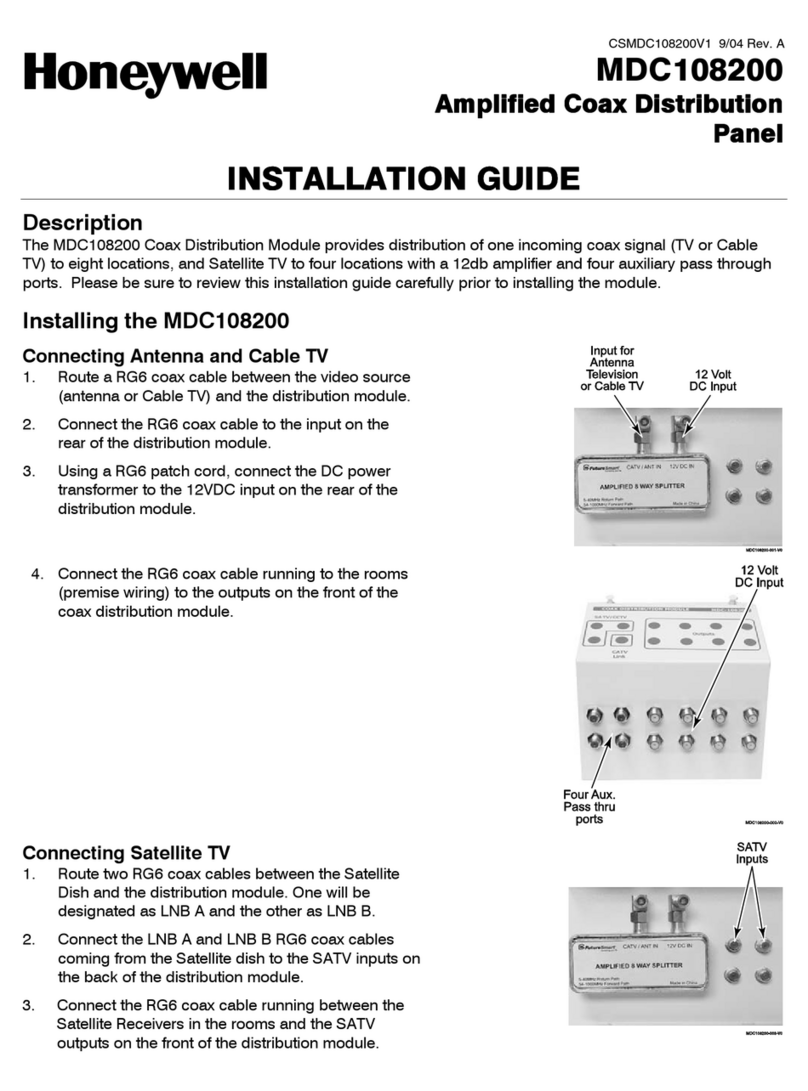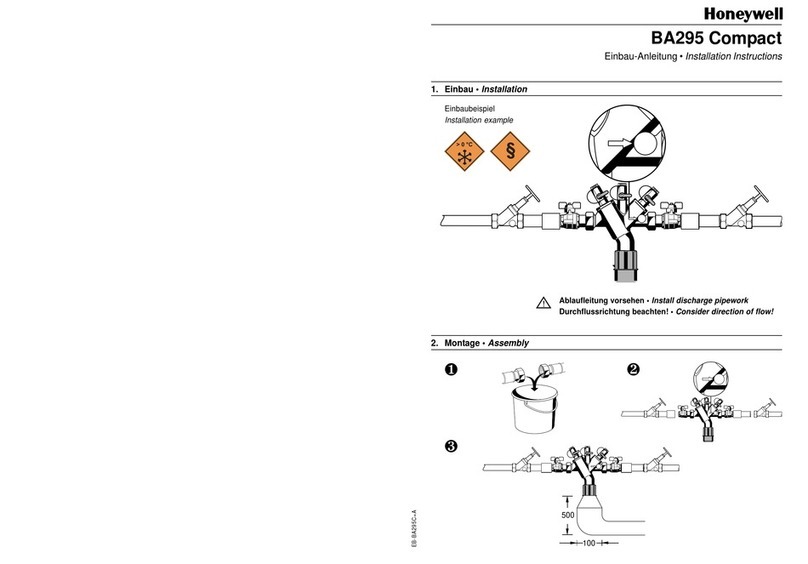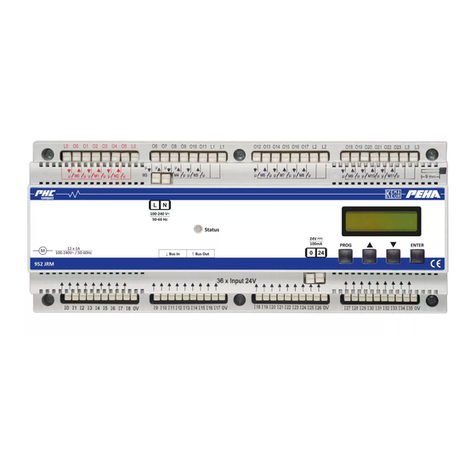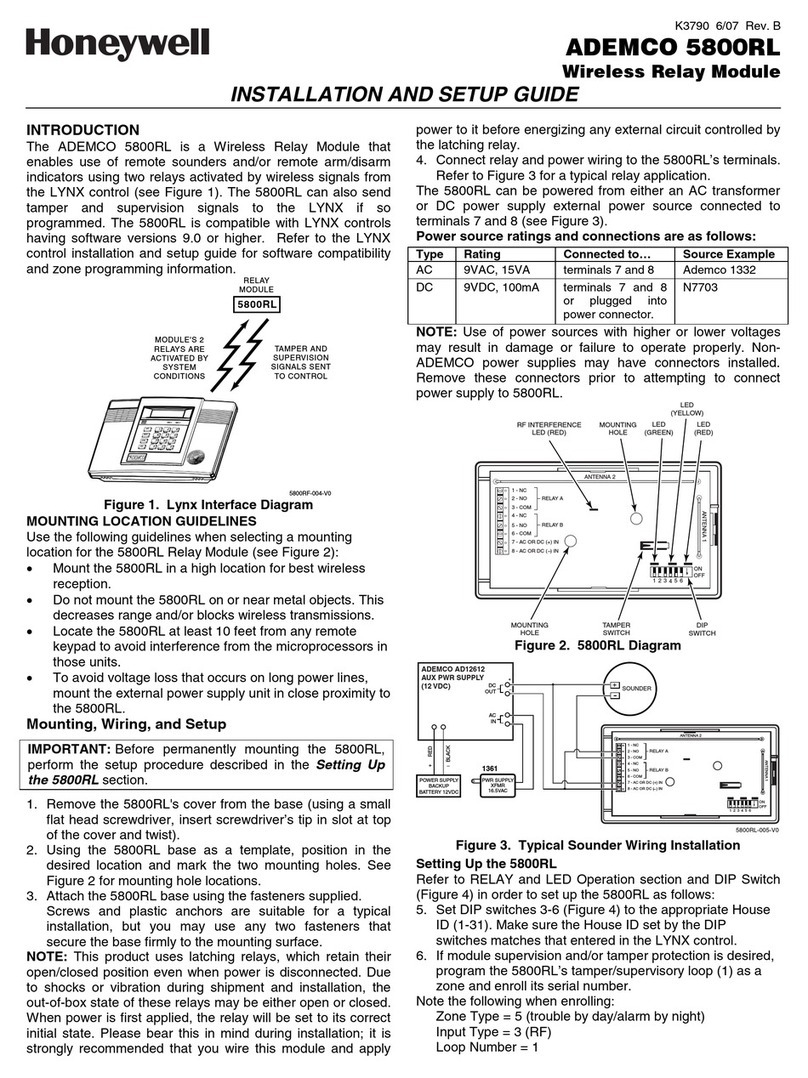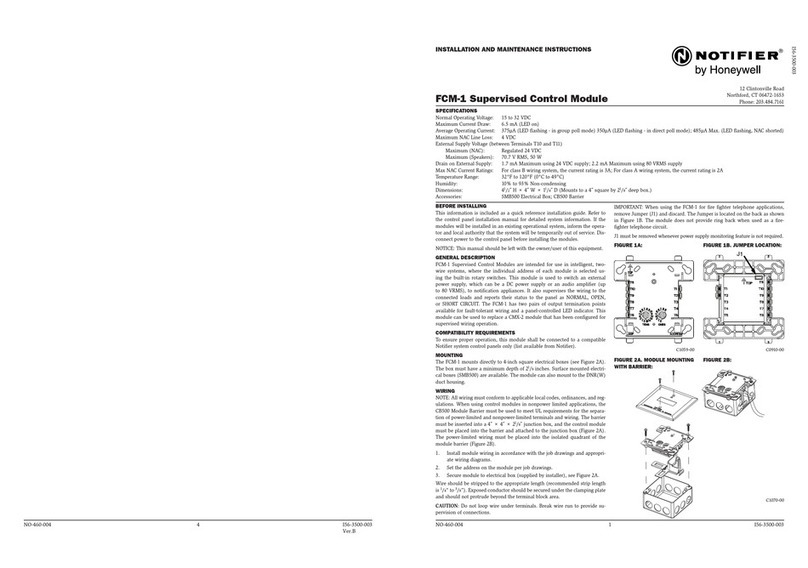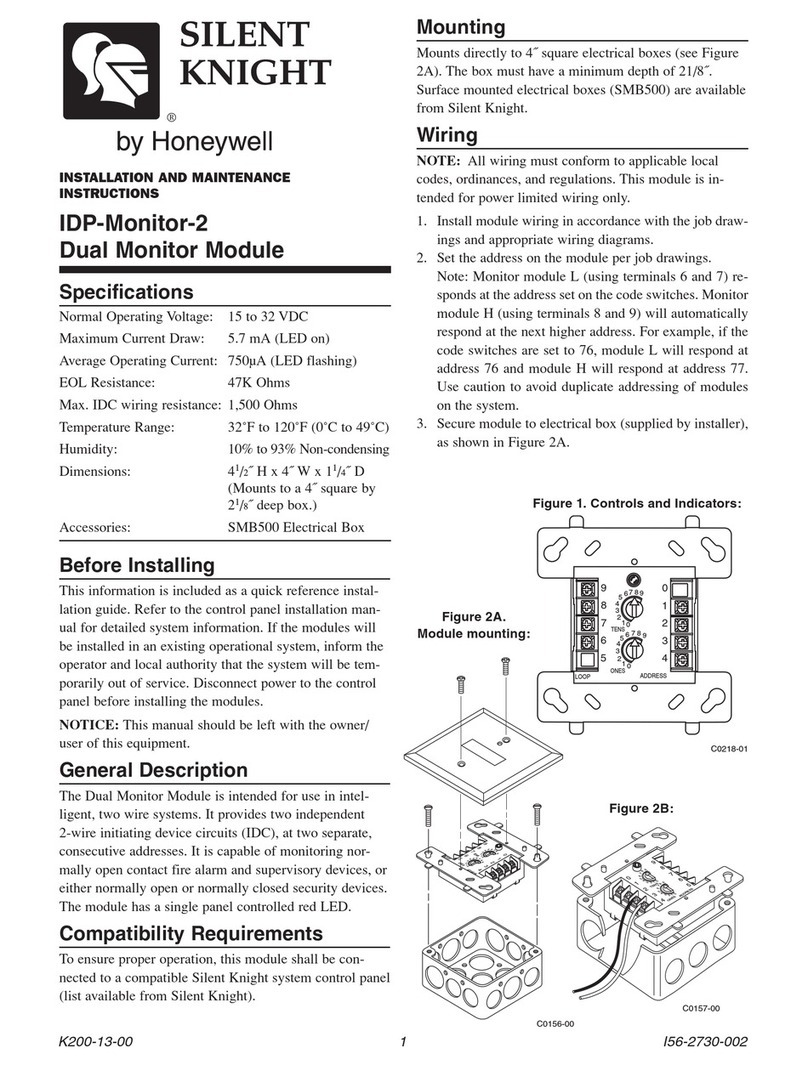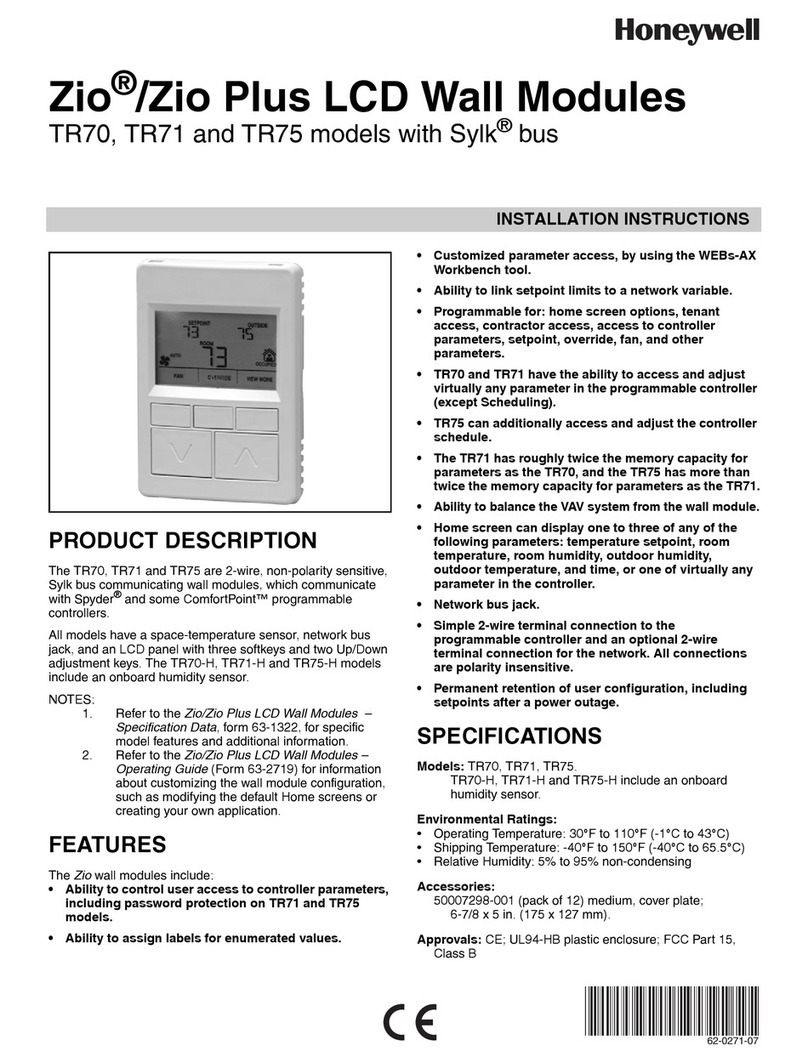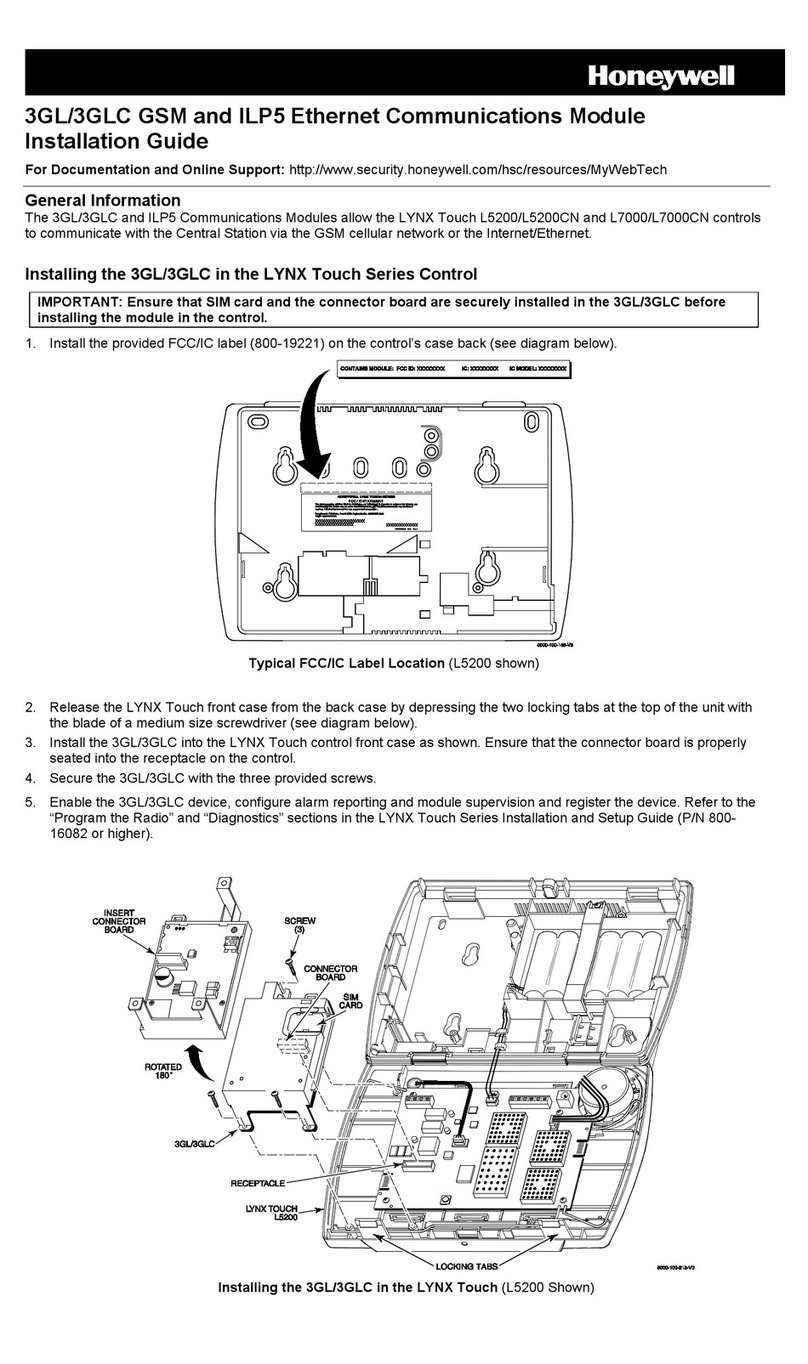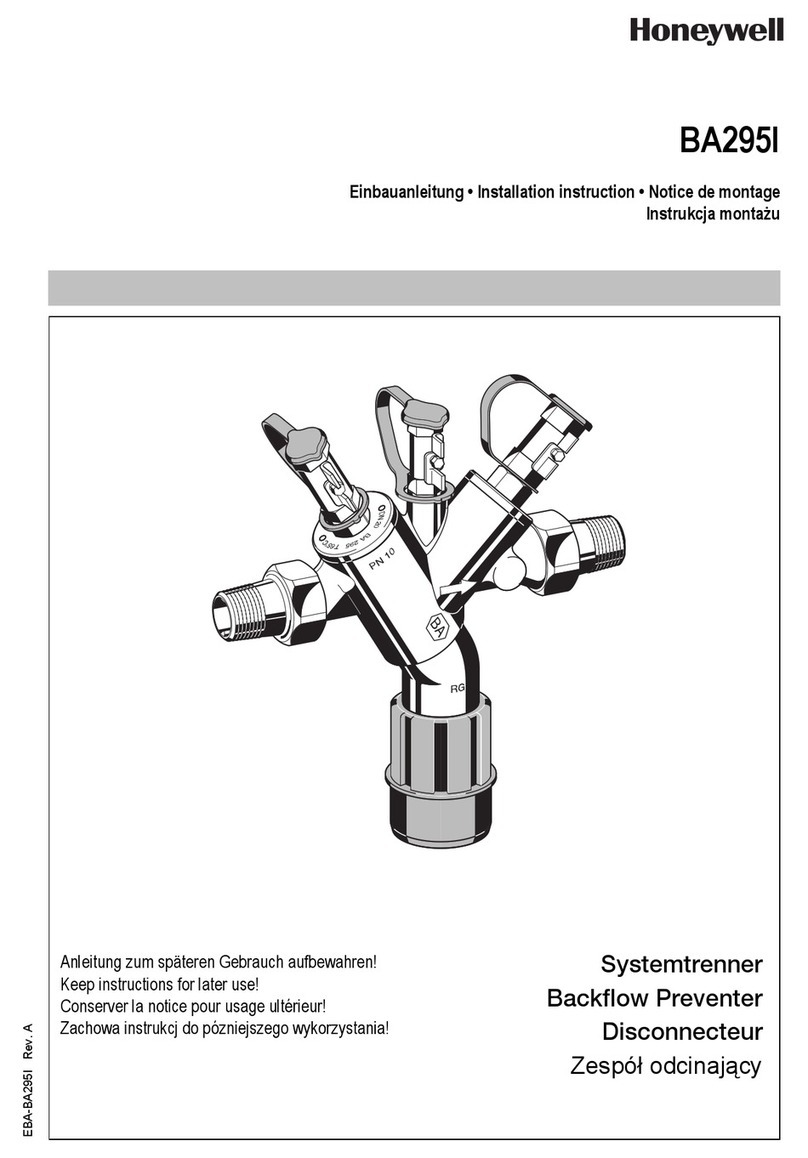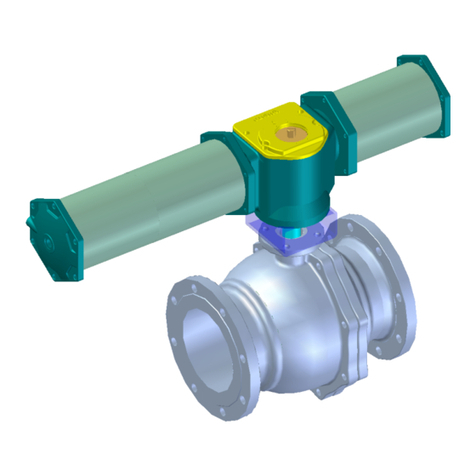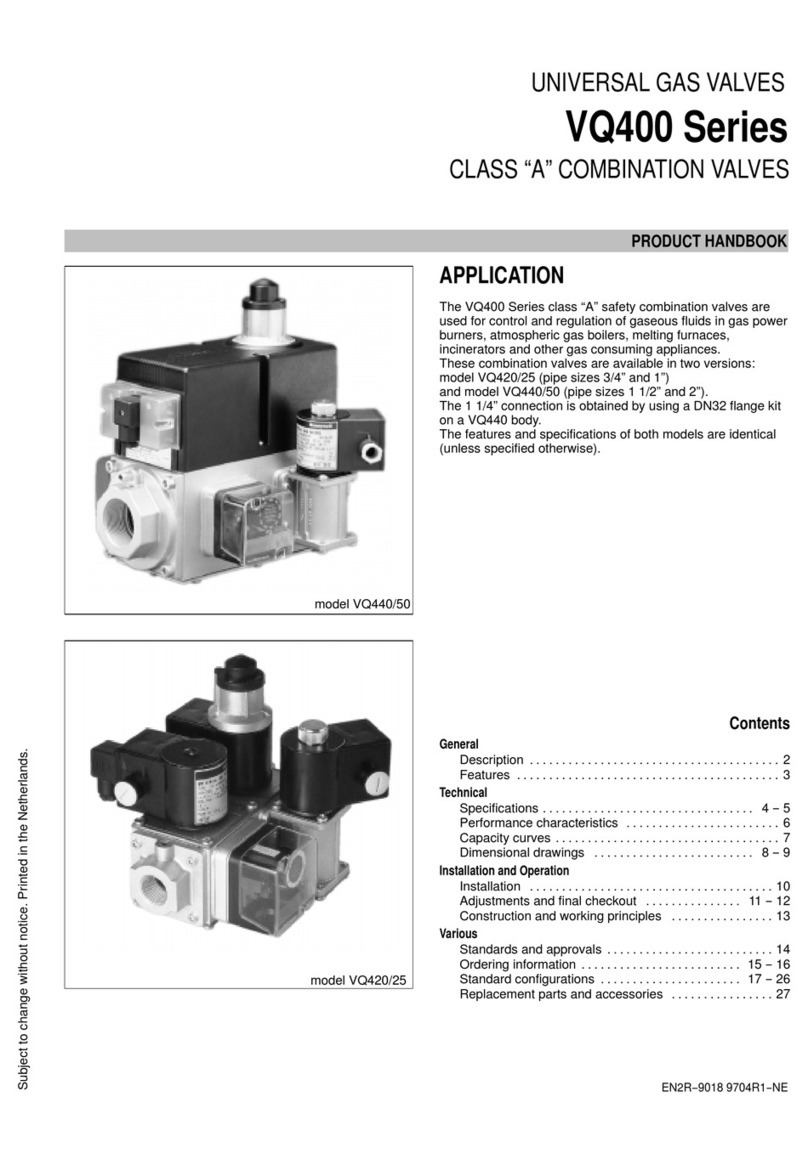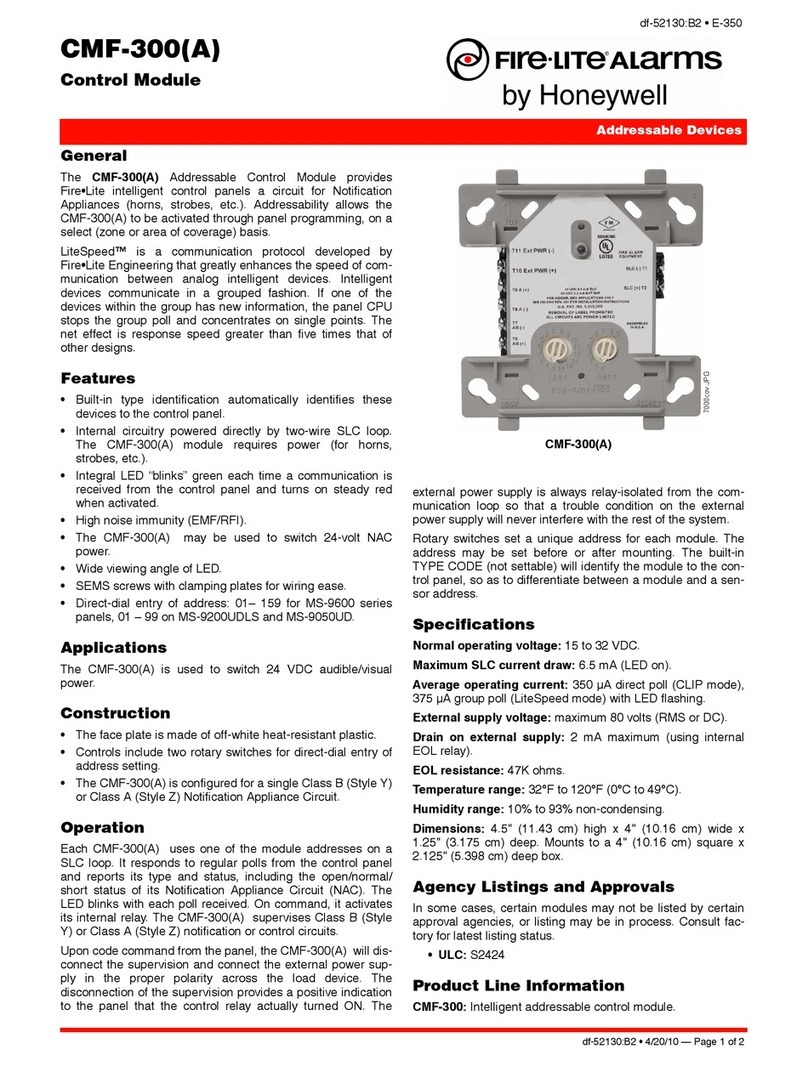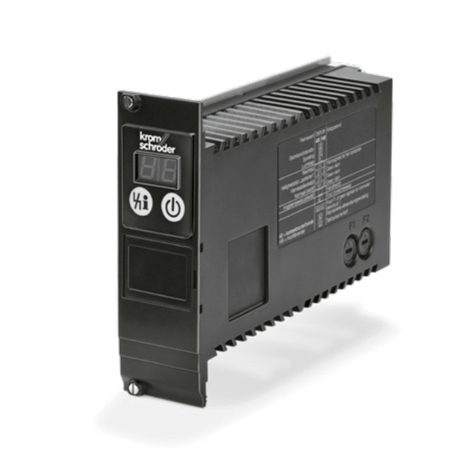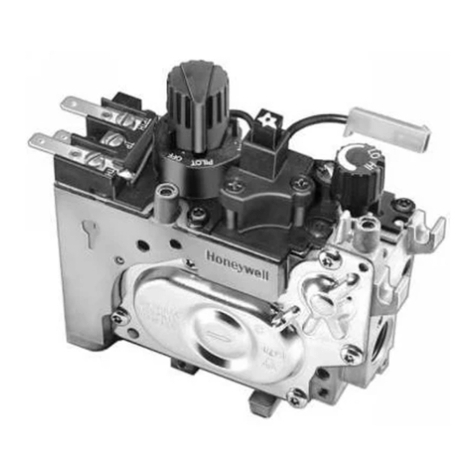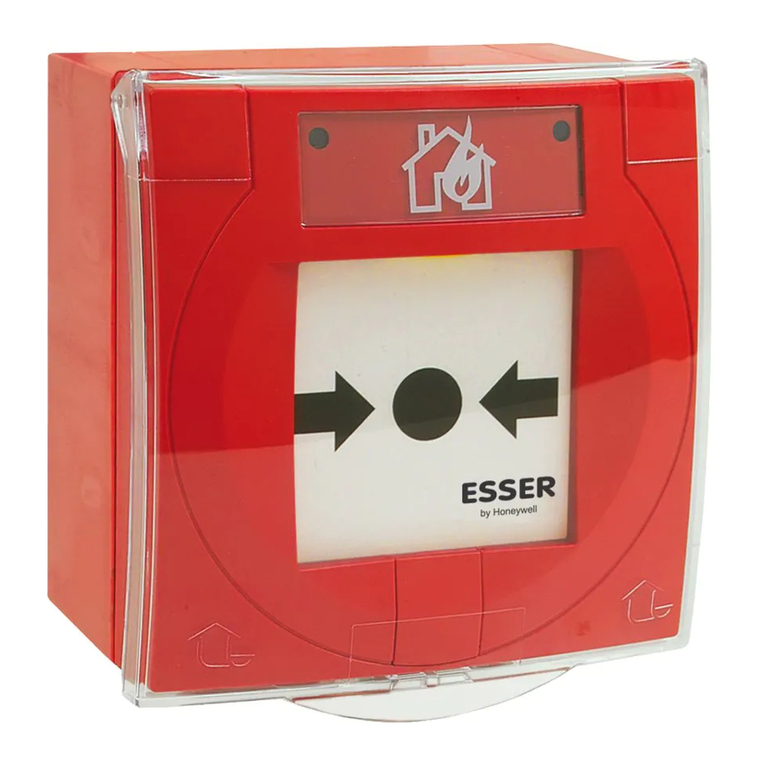
NOTE: Power must not be applied to the unit when changing functionality on
the shunts.
WIRING NOTES
• Power-limited circuits must employ type FPL, FPLR, or FPLP cable as
required by Article 760 of the NEC.
• All wiring must be in accordance with the NEC, NFPA 72 and all other
applicable codes and standards. All external power supplies must be
power limited with battery back-up. All external power supplies and
detectors must be UL listed for fire protection signaling applications.
PROGRAMMING
Connect the module to listed-compatible control panels only. Refer to panel
installation documentation to confirm compatibility.
The modules are programmed as devices in each system according to the pro-
gramming instructions in the appropriate FACP manual.
FIGURE 7.
0
6
5
4
3
21
910
11
12
13
14
15
C0227-00
3 I56-1806-010
7/1/2022
from the end of wire, sliding the bare end of the wire under the clamping
plate screw.
3. Set the address on the modules per the job drawing. Use the rotary code
switches to set the address of the first module (between 01 and 154).
In Class B operation, the remaining modules are automatically assigned to the
next five higher addresses. For example, if the base address switch is set to 28,
the next five modules will be addressed to 29, 30, 31, 32 and 33.
The module is shipped in Class B position, remove shunts for Class A. When
operating in Class A, alternate modules are paired together (+0/+1, +2/+3,
+4/+5), resulting in a total of three modules. For example, if the base ad-
dress switch is set to 28, then 30 and 32 will be automatically assigned to the
modules while 29, 31 and 33 are available to be used for other modules on the
SLC. For Class A and B operation, DO NOT set the lowest address above 154,
as the other modules will be assigned to nonexistent addresses.
NOTE: The XP6-MA must have power cycled for shunt changes to take effect.
NOTE: Some panels support extended addressing. In order to set the module
above address 99 on compatible systems, carefully remove the stop on the
upper rotary switch (see Figure 7). If the panel does not support extended ad-
dressing, do not set the lowest address above 94.
4. A shunt is provided to disable a maximum of two unused modules in
Class B operation and Class A operation. Modules are disabled from the
highest address and work downward. If two modules are disabled, the
lowest four addresses will be functional, while the highest two will be
disabled. For example, in Class B operation, if the shunt for Address Dis-
able is placed on “two” and the base switch is set to 28, the modules will
be assigned to 28, 29, 30 and 31 while disabling the highest two positions.
NOTE: Place unused shunts on single pin to store on board for future use.
0
1
2
3
456789
BASE ADDRESS
TO NEXT DEVICE
–
STATUS
INDICATORS
—
+
—
+
+0
+1
IDC
ADDRESS
—
+
—
+
+2
+3
IDC
ADDRESS
—
+
—
+
+4
+5
IDC
ADDRESS
SLC
—
+
—
+
+
–
+
FROM PANEL OR
PREVIOUS DEVICE
3.9K EOL
RESISTOR
(INCLUDED)
CONNECT MODULES TO
LISTED COMPATIBLE
NOTIFIER CONTROL
PANELS ONLY
SIGNAL LINE CIRCUIT 32 VDC MAX.
SEE PANEL INSTRUCTION MANUAL
FOR WIRE REQUIREMENTS.
CLASS B IDC (TYPICAL)
A/B SELECT
A/B SELECT
DISABLE 1
DISABLE 2
+
–
+
–
T6 T5
DETECTORS MUST BE UL LISTED COMPATIBLE WITH THE MODULE.
INSTALL DETECTORS PER MANUFACTURER'S INSTALLATION INSTRUCTIONS.
(–)
(+)
IN
OUT
—
+
—
+
EXTERNAL SUPPLY
0
1
2
3
456789
POWER-LIMITED
AND SUPERVISED
POWER TO THE NEXT INTERFACE
MODULE MUST BE EXTERNALLY
SWITCHED TO RESET THE DETECTORS.
AN FRM-1 RELAY CONTROL MODULE CAN BE
USED TO SWITCH POWER FROM A
STANDARD POWER SUPPLY. SEE FIGUR 10.
1. To use a common power supply between multiple XP6-MA modules, connect a long power supply jumper from T5 or T6 to T5 or
T6 on the adjacent XP6-MA module.
FIGURE 8. INTERFACE TWO-WIRE CONVENTIONAL DETECTORS – CLASS B
C0154-02
FIGURE 9. INTERFACE TWO-WIRE CONVENTIONAL DETECTORS – CLASS A
0
1
2
3
456789
BASE ADDRESS
TO NEXT DEVICE
–
STATUS
INDICATORS
—
+
—
+
+0
+1
IDC
ADDRESS
—
+
—
+
+2
+3
IDC
ADDRESS
—
+
—
+
+4
+5
IDC
ADDRESS
SLC
—
+
—
+
+
–
+
FROM PANEL OR
PREVIOUS DEVICE
CONNECT MODULES TO LISTED COMPATIBLE
NOTIFIER CONTROL PANELS ONLY
SIGNAL LINE CIRCUIT 32 VDC MAX.
SEE PANEL INSTRUCTION MANUAL
FOR WIRE REQUIREMENTS.
CLASS A IDC (TYPICAL)
A/B SELECT
A/B SELECT
DISABLE 1
DISABLE 2
0
1
2
3
45678910
11
12
13
14
15
++
IDC 2
IDC 3
(–)
(+)
POWER TO THE NEXT INTERFACE
MODULE MUST BE EXTERNALLY
SWITCHED TO RESET THE DETECTORS.
AN FRM-1 RELAY CONTROL MODULE CAN BE
USED TO SWITCH POWER FROM A
STANDARD POWER SUPPLY. SEE FIGURE 10.
T6 T5
IN
OUT
—
+
—
+
EXTERNAL SUPPLY
POWER-LIMITED
AND SUPERVISED
––
Detectors must be UL Listed compatible with the module. Install detectors
per manufacturer’s installation instructions.
C0160-01
1. To select Class A, remove the
two shunts from the “A/B se-
lect” positions.
2. To use a common power
supply between multiple
XP6-MA modules, connect
a long power supply jumper
from T5 or T6 to T5 or T6 on
the adjacent XP6-MA mod-
ule.
